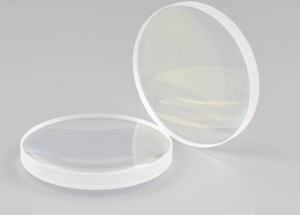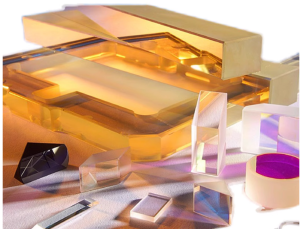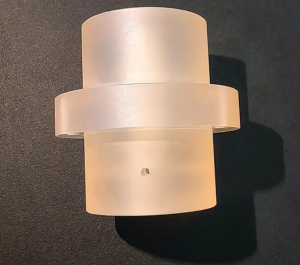Focusing mirror is one of the accessories for optical fiber laser engraving machines, cutting machines, marking machines, welding machines, and other laser equipment. The function is to form a uniform focal point on the entire standard plane. Its main performance indicators are: focal length and scanning range. The focal point position depends on both the focal length and the deflection angle; The scanning range is proportional to the focal length of the scene. After focusing, the spot diameter is proportional to the focal length, that is, when the scanning area reaches a certain level, the larger the obtained spot diameter.
Focusing mirror is an optical element that can compress divergent laser light in an angular direction. Due to the large emission surface of an optical fiber, it is a diffuse beam rather than a collimated or focused spot. Fiber laser focusing mirrors can effectively converge the light beams at the end of the fiber and control the output beam in a small area. According to the requirements of different applications, two or more focusing lenses can be used, and this optical element is called a composite focusing lens. Sometimes, aspherical focusing lenses are also used. From the perspective of the use effect, the aspherical effect is followed by a composite focusing lens.
The function of the focus lens:
1. Improving the ability of detectors with edge light speed incidence;
2. In the same main optical system, additional field mirrors will reduce the area of the detector. If the same detector area is used, the field of view can be expanded to increase the incident flux;
3. The uniform illumination of the photosensitive surface of the detector can be homogenized.
The collimator is also one of the accessories for optical fiber laser engraving machines, cutting machines, marking machines, welding machines, and other laser equipment.
Used in various optical measurement systems, it is often used to collimate the optical path, making the divergent optical path become a parallel optical path. Matching different optical elements can optimize beam collimation for different measurement processes.
In order to improve the coupling efficiency of optical fibers and reduce the beam divergence angle, optical fiber collimators need to be installed at the fiber ports.
The fiber optic collimator has the following characteristics: high beam collimation. After being adjusted by the fiber optic collimator, the divergence angle of the beam does not exceed 2 °. High applicability. The SMA905/FC connector is compatible with other optical devices that enjoy shared optics, and is suitable for modular matching with various devices.




